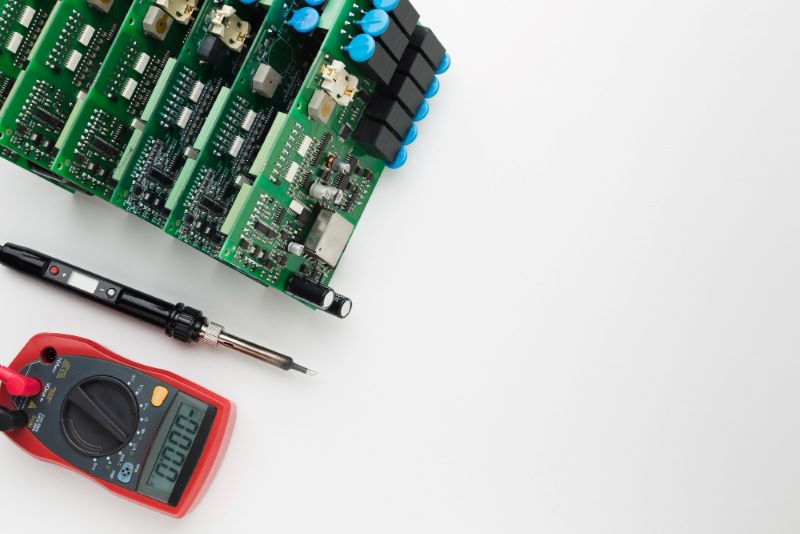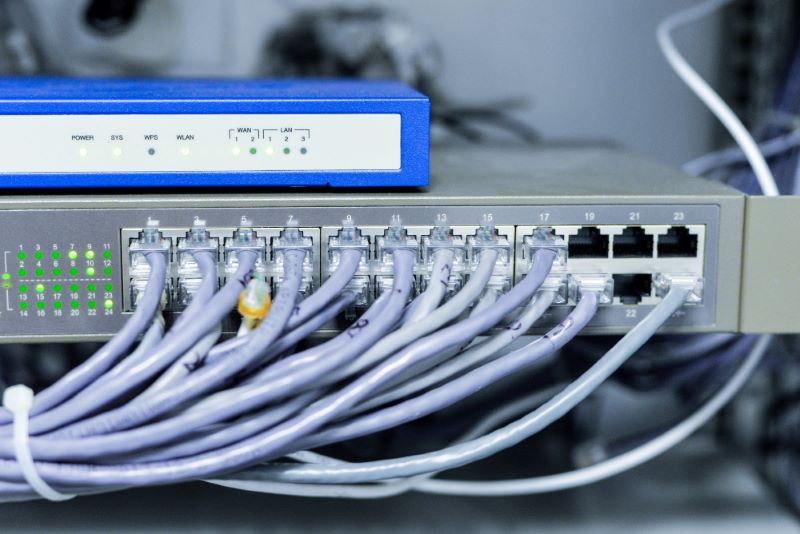Big Data vs. Small Data: Comparison and How To Collect
Over the past decade, data has bloomed, blossomed, and expanded into the giant we know today as Big Data, rearing its gigantic head into every aspect of the online world. About 2.5 quintillion bytes of data are being generated daily on the internet. If you want to compete, you need to know how to collect, manage and use data. Not just that, you also need to understand the different categories of data and how they apply to your needs. This brings us to the big data/small data paradigm.
Depending on several parameters like size, source, function, etc., data can be categorized into big data and small data. While both categories are part of the overall data ecosystem, this classification is quite essential. There is no one-size-fits-all solution to data analysis, so there needs to be a way to identify which datasets should do what and how each data solution should be applied. A dynamic approach to data can help you ensure you get the most out of it.
In this article, we’ll talk about big data vs. small data, the parameters for classifying both categories, and the significant differences between them. Feel free to use the table of contents to skip ahead to the section that most interests you.
Table of Contents
1. Defining the Big Data Small Data Paradigm
2. Difference Between Small Data and Big Data With Web Scraping
Defining the Big Data Small Data Paradigm

Before we compare the two types of data, let us examine the parameters that help us classify a data source as big data or small data. Like I said earlier, both categories are part of the overall data ecosystem. But within that ecosystem, different methods and tools are required to deal with varying types of data. Classifying data as big and small helps to tackle the challenges associated with processing each type of data. However, contrary to how it sounds, size is not the only difference between big data and small data. There are some other characteristics of data needed to place it in one class or the other. So how do you classify data as big or small?
- Size: Well, size. Obviously–yes, it is not the only factor, but it is an important one. Big data is, well, big, while small data is small. Small is relative, though, and datasets as large as a few Terabytes can still be classified as small data. Big data is typically more than a few Terabytes in size. Another way to look at it is that small data is that humans can comprehend and process using traditional data processing methods. In contrast, big data goes beyond human processing capacity and requires special analytics methods for processing.
- Source: Data can also be classified based on its source. Small data is typically retrieved from your enterprise servers, CRM, CDP, ledgers, transaction data, etc. These are mostly in-house sources that give you data on how your business is running and your business policies’ immediate effects. On the other hand, big data comes from sources like social media, point-of-sale purchase data, data libraries, etc.
- Function: This is one of the major parameters used to classify big data vs. small data. Small data is typically used to make decisions that affect your business in the short-term, like creating reports, balancing your books, and making short-term financial decisions. Big data is used for more complex and long-term decision-making processes like pattern recognition, predictive analysis, long-term financial analysis, market analysis, etc.
- Quality: Small data due to the controlled method of collection usually contains less noise than big data. Big data requires rigorous processing due to the volume of irrelevant datasets that it contains.
- Time quality: Due to the transactional quality of small data, it lasts and remains relevant over long periods of time. Big data usually decays faster.
These are some of the major parameters that help to distinguish between small and big data. Using these parameters, let us now define small and big data.
What is small data?
The concept of small data is more than just small datasets, although they are factors in the decision-making process for your business. It also means datasets that affect the course of your business for a short period. Furthermore, an alternative meaning of small data is specific datasets searched and extracted from bulk data.
With web scraping, you can extract small data from sites in real-time into an excel sheet for your personal or business needs. Small data contains datasets with particular qualities, which are useful for one-time decision-making processes like real-time data analytics.
What is big data?
From the name, you can tell that it means a large volume of data. Additionally, big data could be either structured or unstructured. Big data involves a plethora of datasets in which you have to conduct a thorough assessment to choose what’s necessary to help you with your decision. Unlike small data, big data can be implemented over time to make important decisions.
The world is now digital, and people are getting more comfortable with the idea each day, from streaming music & movies online to being able to order a cab from the comfort of your location and seamlessly paying for all these via your device. Consumers and companies especially need big data to gain insight into modern and traditional methods to make informed decisions about projects.
Difference Between Small Data and Big Data With Web Scraping

Web scraping is a specialized data collection method that can get you past the headache of how to collect data in large volumes. Web scraping bots work by crawling through the source code of a given webpage and tagging datasets according to some preset parameters. Then an extractor collects this data and downloads it into a spreadsheet. This data is collected so that it is already organized, and you can implement it efficiently.
With web scraping, you can target specific data sources and classify the data from them under one umbrella. This makes it very useful for differentiating between big and small data. You can set your web scraper only to collect a particular type of data or exclude data that exceeds a certain size limit. You can use web scraping to eliminate noise from a dataset transforming it from big to small data. Web scraping is a data collection solution that leads-in directly to your data management and analysis processes, so you can easily set your scraping process to feed data directly into the analytics process for each type of data. Small data analytics mostly involves traditional methods, so this might not be needed for small data, but it is valuable for big data analytics.
Big Data vs. Small data

Carrying out big data vs. small data comparison is a compulsory part of digital strategy. Regardless of their necessities, they still have their differences. Knowing these differences between them in business contexts will help you narrow down your search to exactly what you’re looking for. Both data types are equally important with their impacts on the market, but they have unique qualities that distinguish them from one another. Here are a few examples of big data vs. small data in business.
● Big data vs. small data (Comprehension, Accessibility & Analysis)
One critical difference for business purposes is that small data is usually more comprehensive, accessible, and examinable than big data. It means big data is neither easy to access nor extract, which is why many people opt for web scraping. Some people may not find it tasking to copy and paste small data for their use, but big data is too heavy to extract manually. Naturally, big data analytics is more in-depth than small data analytics since it contains more data groups.
● Big data vs. small data in social media
Data flow in social media includes posts, search history, check-ins, profile pictures, and more. In this case, big data takes the trophy because the volume and structure of social media data are such that it requires unique processes to handle. However, you can also conduct filtered searches that represent small data. Scraping social media data offers benefits such as revised strategies, unique content creations, microtargeting, and others. If you are implementing a data-driven social media strategy, you should aim to have a high-level analytics structure in place.
● Big data vs. small data in marketing
The marketing industry is now driven by an overflow of data, making it one of the most important factors. How you market your product or service sets the tone for the relationship you want to build with your customers. Historical optimization is a marketing trend that requires big data to recycle and improve previous projects within an organization. However, marketing data also has some transactional aspects. These transactional datasets qualify as small data and can be generally managed with traditional processes. Typically, analytics for marketing usually involves a mix of small and big data.
● Small data vs. big data for consumers
As an end-user, innovations exist because of you, and it would be a shame if you didn’t put it to good use. Big data may be overwhelming to consumers because of how bulky it is, but small data is perfect. Although small data is sometimes a result of big data, it is simple and straightforward. Consumers can use data to conduct price comparisons, investments, find out the best deals, and more.
Small Data vs. Big Data Analytics With Scraping Robot

At Scraping Robot, we pride ourselves on our cutting-edge scraping technology. Our Scraping service uses API technology and multiple proxies to enable you to collect data both in real-time and from numerous web pages simultaneously. You can get data in as fast as 60 seconds. This means you can keep an eye on all your data sources, both big and small, with a single scraping tool. To get started, all you have to do is send us a message detailing what you want, and our developers will get started building your custom scraping solution. With your own custom scraping solution, you can easily play off big data vs. small data and get the best of both datatypes.
You can also check out our prebuilt modules to try your hand at some DIY scraping. Each scrape costs only $0.0018, and you get 5000 free scrapes when you sign up.
Conclusion

A big data vs. small data comparison tells us one major thing; you cannot escape the need for data. Either in small amounts or in large volumes, you have to implement data into your business strategies if you hope to stay relevant in this digital age. At Scraping Robot, we aim to help you stay relevant. Try out our scraping solutions today to get the best of both big and small data.
The information contained within this article, including information posted by official staff, guest-submitted material, message board postings, or other third-party material is presented solely for the purposes of education and furtherance of the knowledge of the reader. All trademarks used in this publication are hereby acknowledged as the property of their respective owners.
